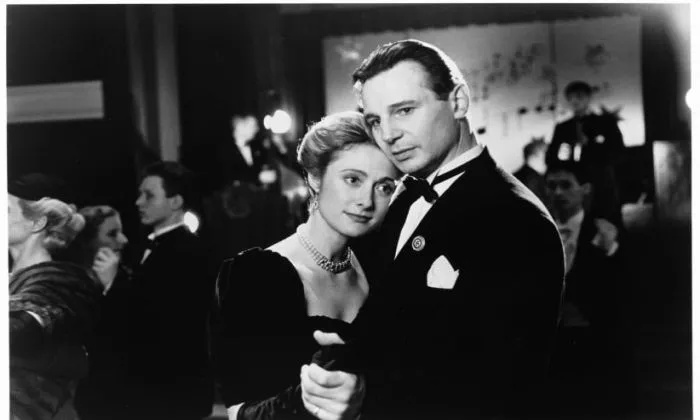Steven Spielberg’s “Schindler’s List” (1993) is a cinematic masterpiece that vividly portrays the story of Oskar Schindler and his remarkable efforts to save Jewish lives during the Holocaust. The film’s journey from conception to completion was a labor of love and a testament to Spielberg’s unwavering commitment to honoring this important historical narrative. In this article, we explore how Steven Spielberg brought “Schindler’s List” to life, from the initial inspiration to the meticulous production process.
Inspiration and Source Material
The journey of “Schindler’s List” began with the discovery of Thomas Keneally’s Booker Prize-winning novel “Schindler’s Ark” (1982), which recounted the true story of Oskar Schindler’s rescue of Jews during World War II. Spielberg was deeply moved by the book and saw its potential for adaptation into a film that could educate and inspire audiences.
Spielberg’s personal connection to the material, as a Jewish filmmaker with relatives who had experienced the Holocaust, fueled his passion for the project. He felt a profound responsibility to honor the memory of Holocaust victims and survivors through a respectful and authentic cinematic portrayal.
Research and Preparation
Before filming began, Spielberg embarked on an extensive research and preparation process to ensure the historical accuracy and emotional authenticity of “Schindler’s List.” The director consulted with Holocaust survivors, historians, and experts to gain firsthand accounts and insights into the experiences of those who lived through the atrocities.
Spielberg’s commitment to authenticity extended to every aspect of the production, from casting to set design to costumes. The director sought to recreate the period with meticulous attention to detail, drawing on archival photographs and survivor testimonies to inform the film’s visual aesthetic.
Filming and Production
The filming of “Schindler’s List” presented unique challenges and complexities due to the sensitive nature of the subject matter. Spielberg made the decision to shoot the film in black-and-white, a stylistic choice that enhanced the documentary-like realism and emotional impact of the narrative.
Spielberg’s direction emphasized authenticity and emotional depth, guiding the cast to deliver nuanced and heartfelt performances. The director’s hands-on approach and collaborative spirit fostered a sense of purpose and dedication among the cast and crew, who shared his commitment to honoring the memory of Holocaust victims.
Casting and Performances
The casting of “Schindler’s List” was crucial to the film’s success, as Spielberg sought actors who could bring depth and authenticity to their roles. Liam Neeson was chosen to portray Oskar Schindler, capturing the character’s complex evolution from a shrewd businessman to a compassionate savior.
Ralph Fiennes delivered a chilling and memorable performance as Amon Goeth, the sadistic SS officer responsible for overseeing the Plaszów concentration camp. Ben Kingsley portrayed Itzhak Stern, Schindler’s Jewish accountant and confidant, with grace and gravitas.
Emotional Impact and Legacy
“Schindler’s List” premiered to critical acclaim and received numerous accolades, including seven Academy Awards, including Best Picture and Best Director for Spielberg. The film’s impact extended beyond its artistic achievements, catalyzing public discussions about the Holocaust and prompting reflections on the moral imperatives of remembrance and empathy.
Spielberg’s commitment to education and outreach ensured that “Schindler’s List” would have a lasting legacy as a tool for Holocaust education and remembrance. The director founded the USC Shoah Foundation, dedicated to collecting and preserving testimonies from survivors and witnesses of genocide, furthering the film’s mission of bearing witness to history.
Conclusion
In conclusion, Steven Spielberg’s journey to bring “Schindler’s List” to life was a labor of love and a testament to the power of cinema to educate, inspire, and provoke reflection. The director’s personal connection to the material, combined with his dedication to historical accuracy and emotional authenticity, resulted in a film that continues to resonate with audiences as a timeless masterpiece.
Through meticulous research, thoughtful preparation, and passionate storytelling, Spielberg honored the memory of Holocaust victims and survivors while conveying a message of hope and resilience in the face of unspeakable evil. “Schindler’s List” stands as a testament to Spielberg’s artistic vision and moral conviction, underscoring the importance of confronting history with empathy and remembrance.
Related Topics:
Understanding the Main Point of “Schindler’s List”
The Symbolism of the Girl in the Red Coat in “Schindler’s List”
Ralph Fiennes: Portraying a New Kind of Evil in “Schindler’s List”

